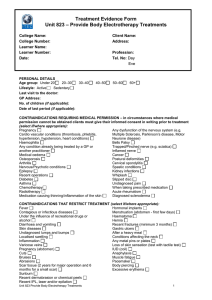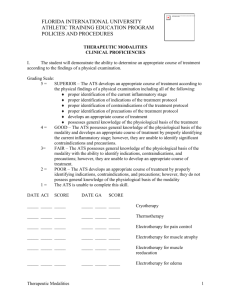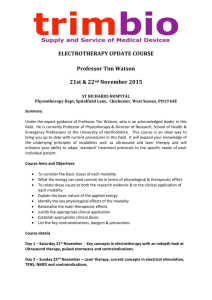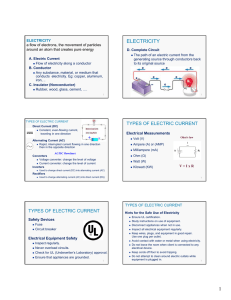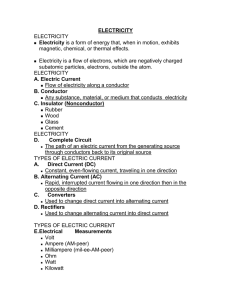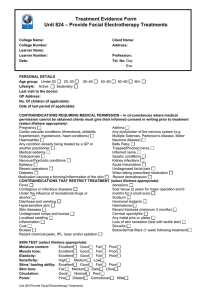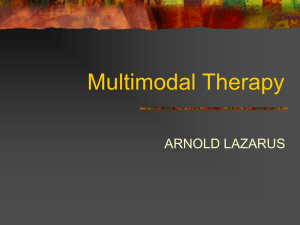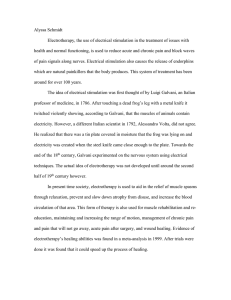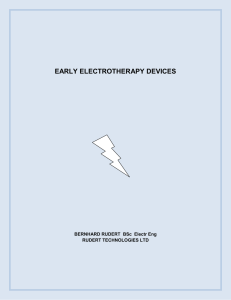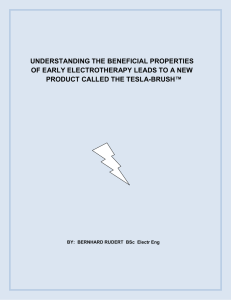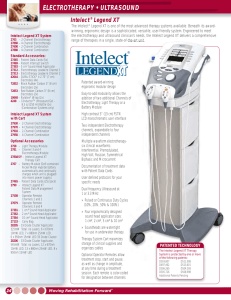1-Introduction.doc
advertisement
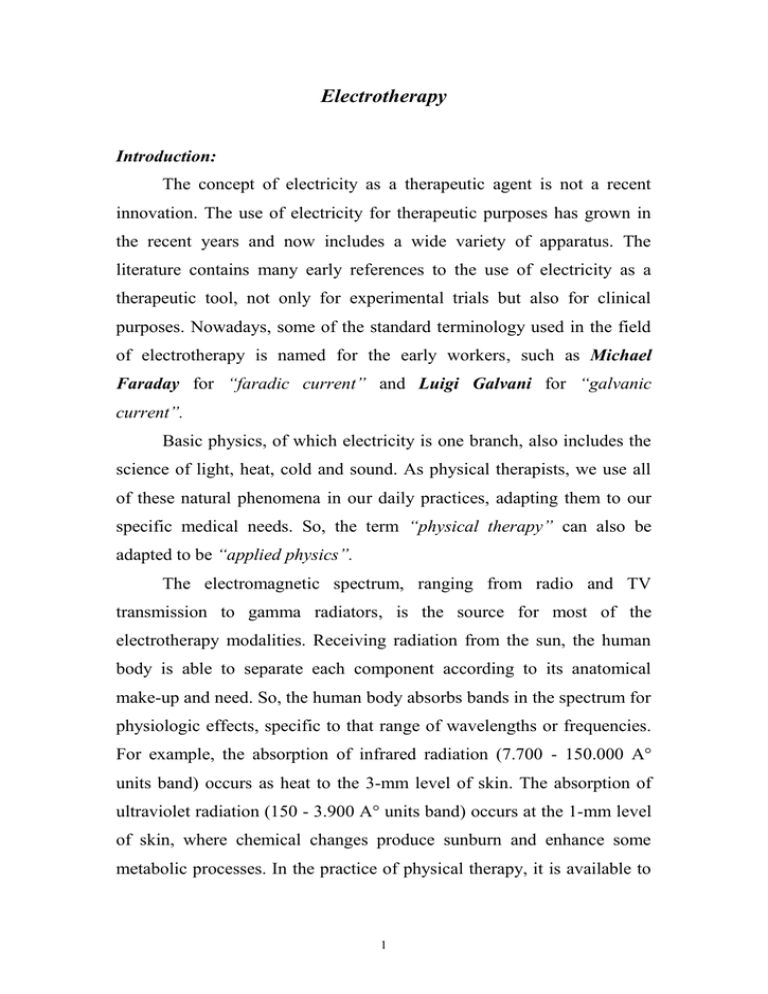
Electrotherapy Introduction: The concept of electricity as a therapeutic agent is not a recent innovation. The use of electricity for therapeutic purposes has grown in the recent years and now includes a wide variety of apparatus. The literature contains many early references to the use of electricity as a therapeutic tool, not only for experimental trials but also for clinical purposes. Nowadays, some of the standard terminology used in the field of electrotherapy is named for the early workers, such as Michael Faraday for “faradic current” and Luigi Galvani for “galvanic current”. Basic physics, of which electricity is one branch, also includes the science of light, heat, cold and sound. As physical therapists, we use all of these natural phenomena in our daily practices, adapting them to our specific medical needs. So, the term “physical therapy” can also be adapted to be “applied physics”. The electromagnetic spectrum, ranging from radio and TV transmission to gamma radiators, is the source for most of the electrotherapy modalities. Receiving radiation from the sun, the human body is able to separate each component according to its anatomical make-up and need. So, the human body absorbs bands in the spectrum for physiologic effects, specific to that range of wavelengths or frequencies. For example, the absorption of infrared radiation (7.700 - 150.000 A° units band) occurs as heat to the 3-mm level of skin. The absorption of ultraviolet radiation (150 - 3.900 A° units band) occurs at the 1-mm level of skin, where chemical changes produce sunburn and enhance some metabolic processes. In the practice of physical therapy, it is available to 1 produce these various bands of energy artificially to apply them in the form of therapeutic modalities. When applying electric modalities to patients, it is essential to the physical therapist to respect the electrical nature of the human body. An appreciation of the body’s electrophysiology and the electrical qualities of the selected modality are essential for appropriate treatment. As the human body functions by electricity, its mal-function can also be measured by using electricity. Many diagnostic procedures are available now such as electro-cardiogram (ECG), electro-encephalogram (EEG) and electro-myogram (EMG). Recent developments: Among the newer modalities of electrotherapy is the cold laser. Although laser light is produced within the segment of the visible spectrum, it does not act as ordinary light. It has been found that laser light has unusual favorable effects on human metabolic processes. Other recent developments in the field of electrotherapy present themselves in using the existing modalities with variations in waveforms, amplitudes, polarities and all other parameters. Nothing new has been discovered in the basic electro-physics, but many new adaptations and applications have been established due to the findings in studies of human neurophysiology. As more information concerning the operation of the human systems is made available, new and effective techniques must be designed to optimize therapeutic applications. Another recent addition to the field of human science has been the concept of endorphins and their role in pain control. The body production of its own natural painkiller, beta-endorphin, is believed to be greatly enhanced by the administration of an electric current to the surface of the body. Pain normally triggers the production of this chemical agent, which 2 provides an analgesic effect. Electrical stimulation, though not painful, will also trigger endorphin production and dissemination within the human system. So, the standard electrical muscle stimulation, designed to elicit contractions as an exercise modality, may act as a stimulant for pain control through increasing the amount of endorphin released. As mentioned before, the key to successful practice in electrotherapy is the knowledge of basic physics of each modality. So, the most important point to be put into consideration is to know why this specific treatment modality has been selected. Generally speaking, the road to effective treatment should pass through: Skillful selection of modality. Administration of effective treatment Appropriate adaptation of treatment procedures. Accurate evaluation of the results. 3
